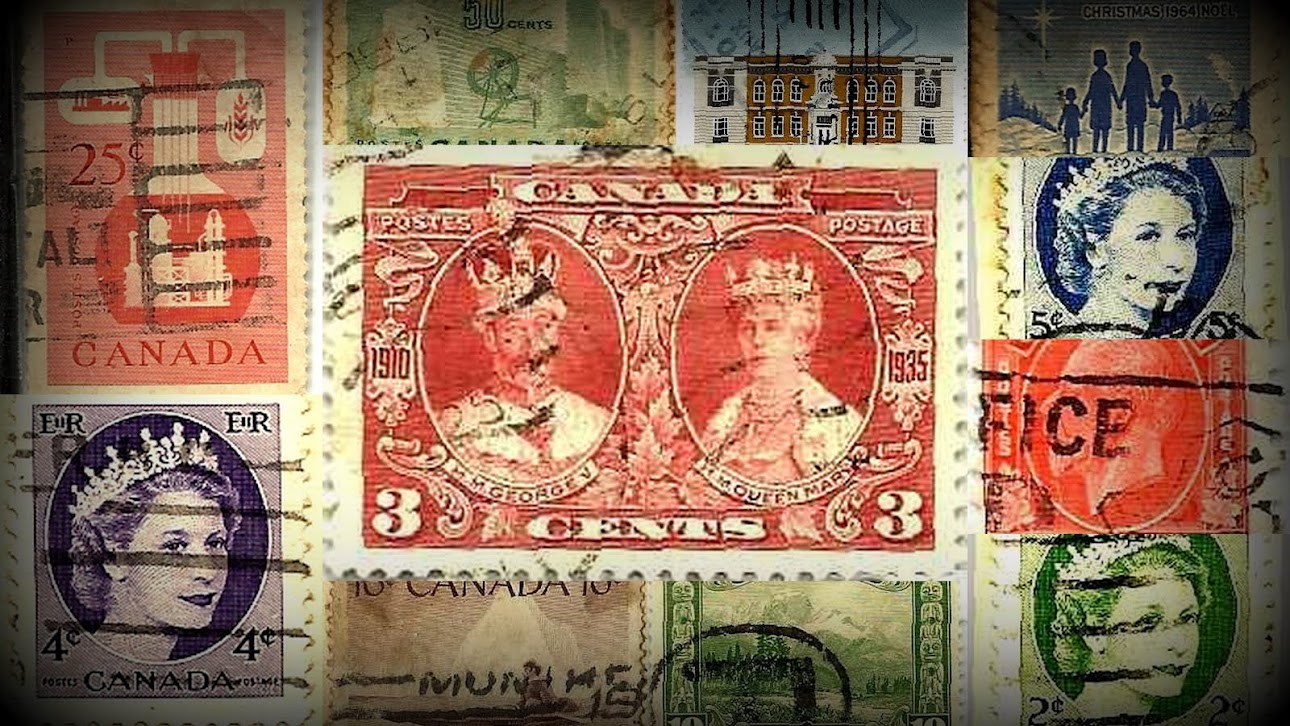 |
| Court House in Yorkton, Saskatchewan Canada $1 1994 |
1994 Court House in Yorkton, Saskatchewan $1 Canada
Text: 1$ Canada Post
Condition: Ø = used/cancelled
Title: Court
House, Yorkton
Face value: 1
Stamp Currency: $
Country/area: Canada
Year: 1994-02-21
Set: 1994 Architecture
Stamp number in set: 1
Basic colour: Multicolour
Exact colour:
Usage:
Definitive
Type: Stamp
Theme: Architecture
Stamp subject: Architecture
NVPH number:
Michel number: CA 1403
Yvert number: 1354
Scott number: 1375
Stanley Gibbons number: 1161
Printing office:
Perforation: 14 x 14½
Size:
Watermark:
Paper:
Printing:
Buy Now: Bid Now:
February 21, 1994 saw the release of two
high-value Architecture stamps: a $1 Court House and $2 Provincial Normal
School.
What was special about these two stamps?
They were printed by Leigh-Mardon Pty Limited ... of Australia!
Both values were reissued a year later,
on February 20, 1995. This time the printer was the Canadian Bank Note Company.
The above would imply that there were
only two printings of each stamp. Wrong! As we will see, there were three
printings of the $1 value and four printings of the $2 value.
By studying these stamps with the aid of
an ultraviolet light, different "glows" of the front of the building
can be seen, which proves that multiple printings were made.
$1 Court House
The $1 value pictures the Court House in
Yorkton, Saskatchewan. The central portion of the front of the building is a
brown colour while the left and right ends are grey-coloured.
By "lamping" (studying stamps
under an ultraviolet light in a dark room) the Leigh-Mardon printing of this
stamp, two different "glows" can be seen on the central portion of
the building, as listed here:
Printer
|
Perf
|
Glow
|
Estimate
|
LM
|
14.6 x 14
|
glows orangy
|
67%
|
LM
|
14.6 x 14
|
glows copper
|
7%
|
CBN
|
13.3 x 13
|
-
|
26%
|
This shows that three different printings
exist, two by LM and the one by CBN. Also notice that the second printing by LM
is relatively scarce.
Court House in Yorkton, Saskatchewan Canada
Many of Saskatchewan’s most impressive
public buildings were designed by its second Provincial Architect, Maurice
William Sharon. Sharon was born in St. Thomas, Ontario on November 1, 1875. He
graduated from the School of Practical Science (now the University of Toronto’s
Faculty of Applied Science and Engineering), and then apprenticed six years in
architects’ offices. Arriving in Regina in 1906, he was first employed by the
province as a cartographer and has been credited with drawing the first
official map of the new province. He subsequently went into an architectural
partnership with a former employer, Neil R. Darrach. Sharon and Darrach’s
Regina works include Westminster United Church, the Donahue Block, and the
Guaranty/Western Trust Building.
Sharon’s tenure as Provincial Architect
from 1916 to 1930 coincided with the province’s boom years. Among his works are
the Saskatchewan Hospital at Weyburn, the Provincial NORMAL SCHOOL at
Saskatoon, and the 1928 ballroom addition to GOVERNMENT HOUSE, Regina. However,
his most distinctive and prominent designs are several elegant court houses.
Yorkton Court House, a Provincial Heritage Property, is an example of the Beaux
Arts style; it was featured on the $1 stamp of Canada Post’s Canadian
Architectural Heritage series. Estevan Court House (also a Provincial Heritage
Property) is considered Saskatchewan’s finest example of the Colonial style,
exhibiting a symmetric design and fine detailing in stone and brick. Sharon’s
other Colonial courthouse designs are Assiniboia and Weyburn (both Provincial
Heritage Properties), Gravelbourg, Kerrobert, Melfort, Prince Albert,
Shaunavon, and Wynyard.
Sharon was active in the formation of the
Saskatchewan Association of Architects in 1912 and served two terms as its
president. A Liberal supporter, Sharon lost his position as Provincial
Architect following the election of the Conservative government in 1929. He
spent his remaining years in BC, where his few subsequent works have all since
been demolished. The excellence of his architectural capabilities is perhaps
best attested to by the fact that many of Maurice Sharon’s buildings are still
standing almost a century later, and over a dozen of them have been formally
designated as Municipal or Provincial Heritage Properties. Maurice Sharon died
September 8, 1940.

No comments:
Post a Comment